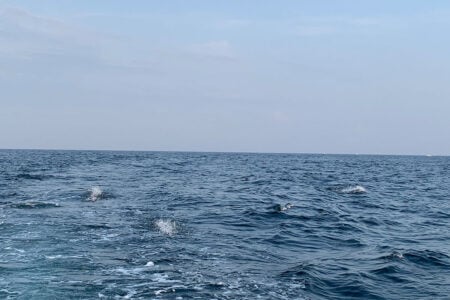
A new take on an offshore trolling classic.
There have been so many advancements in offshore fishing lures that an old standby can easily get forgotten. But the fact is, cedar plugs have been catching tuna for many decades and still continue to do so for those that include them in their spread.
Despite the insane success of new-age spreader bars and ballyhoo presentations, sometimes the basic, cylindrical appearance of a solo, darting lure is exactly what a fish wants. Perhaps it looks like a baitfish separated from the herd when a tuna rises to inspect what it will attack. Maybe it’s the erratic movement that gives the lure the look of an injured or fearful forage fish. Whatever the case, all the new age video footage on the nature and wilderness programs show that a baitfish adjacent to the safety of the bait ball is the first to meet its demise
So that established, what kind of cedar plugs should one employ and where should they be placed?
There are a variety of colors and several sizes available on the market. The Seastriker 6-inch plug is one that I have seen in the water most and has been around for the duration; albeit, 4- and 8-inch choices are available. The natural, wood-colored version is highly favored in the offshore community despite its basic appearance. Purple/black, red/white and mahi-colored have been go-to lures. The rigged-out-of-the-package cedar plugs often need tuning if they don’t run properly (which you can find how on YouTube).
One knock on traditional cedar plugs is their penchant for dropping hooked up fish; captains regularly complain that they lose too many tuna because the hook shaft and shank are located up in the plug, so if the tuna moves decisively in a direction that creates a favorable angle, the lure works much like a lever prying the hook from a fish’s mouth on the headshake. Enter a new kind of cedar plug by Sterling Tackle. After intense field testing, terrific results and data collection that exhibits a higher success rate than other cedar-style plugs on the market, Sterling Tackle’s new CedarFlex has the same shape and darting action of the old-school versions, but with a softer, more pliable body isn’t rejected and spit by tuna. In essence, the lack of rigidity in the body of the plug allows the bait to pull to the corner of the fish’s mouth for a deeper hook set. The larger hook gap is not partially blocked as it is with a wooden plug.
Each captain has his or her preference where cedar plugs are trolled in the spread. The teams that I’ve been a part of always fished them up close to the stern as the lure closest to the propwash. Sterling Tackle’s field test results suggest placing the CedarFlex on the face of the third wake for strikes in addition to other prominent spots. Captains that send a cedar plug deep down the center of the entire array of lures like that it acts as a trailer and an altogether different look than the spreader bars. It appears as a singular baitfish trying to catch up to the pack when in that location.
Cedar plugs can be run out of flat line clips or straight from the rod tip. What’s more, cedar plugs are sometimes used as a stinger on a chain, thus enhancing what a tuna views as it comes to the surface. Sterling’s CedarFlex lures catch solo, on chains and as a stinger on a spreader bar so there is versatility. Running multiple cedar plugs is common, but they must be strategically placed because the bob and weave motion that makes them so effective can cause lines to cross.
Captains targeting yellowfin tuna find that trolling speeds of 5 to 9 miles per hour are ideal for the plugs; the faster the vessel travels, the more action the plugs demonstrate. In fact, bluewater anglers should not be surprised if a wahoo crashes bait. Fifteen years ago, a 30-pound wahoo struck at a cedar plug in my wash and missed. I dropped back the plug, came tight and was instantly rewarded with a follow-up strike from the fish.
If you talk to captains in the Northeast, Southeast and tropics, they’ll all have slightly different ideas how to use a cedar plug. But they’ll also tell you that they always include them in their toolbox of lures.




